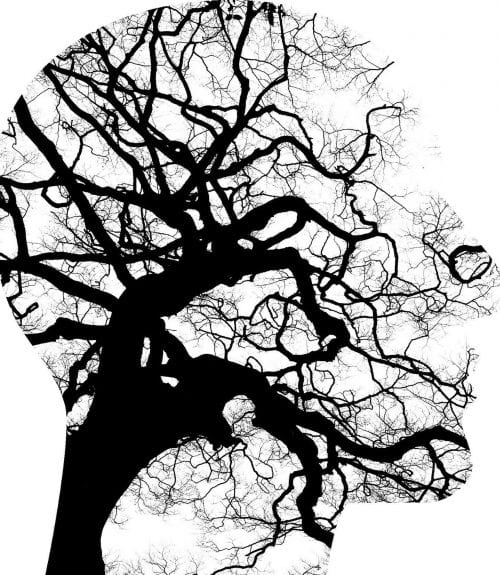Common Techniques
 Cognitive Behavioral Therapy (CBT) is a form of psychotherapy that helps individuals identify and challenge negative thinking patterns and behaviors. CBT is based on the idea that our thoughts, feelings, and behaviors are interconnected. By understanding how these elements influence each other, individuals can learn to modify their thinking patterns to improve their emotional state and behavior.
Cognitive Behavioral Therapy (CBT) is a form of psychotherapy that helps individuals identify and challenge negative thinking patterns and behaviors. CBT is based on the idea that our thoughts, feelings, and behaviors are interconnected. By understanding how these elements influence each other, individuals can learn to modify their thinking patterns to improve their emotional state and behavior.
Cognitive Techniques
Cognitive techniques aim to help individuals become aware of their thoughts, challenge their validity, and replace them with more positive and realistic perspectives.
Cognitive Restructuring is a fundamental CBT technique that involves identifying and challenging negative thoughts. By becoming aware of these thoughts, individuals can begin to question their accuracy and validity. For example, a person with depression might frequently think, “I’m worthless and will never succeed.” Cognitive restructuring involves challenging this belief by examining the evidence for and against it, such as past accomplishments or positive feedback.
Socratic Questioning is another CBT technique that involves using open-ended questions to help clients examine their thoughts and beliefs. By asking questions such as “What evidence supports that belief?” or “Is there another way to interpret the situation?”, therapists can guide clients towards more balanced and realistic perspectives.
Thought Records are a journaling technique that involves documenting thoughts, feelings, and behaviors. By tracking these elements, individuals can identify patterns and connections between their thoughts, feelings, and actions. This can help them recognize how their thoughts influence their emotions and behaviors.
Cognitive Disputation is a technique that involves directly challenging negative thoughts with evidence and alternative perspectives. For example, if a person is afraid of public speaking and thinks, “I’m going to make a fool of myself,” the therapist might challenge this belief by asking, “What is the worst that could happen?” or “Have you ever successfully given a presentation before?” By examining the evidence and considering alternative possibilities, individuals can learn to replace negative thoughts with more positive and realistic ones.
Mindfulness is a technique that involves paying attention to the present moment without judgment. By focusing on the here and now, individuals can become more aware of their thoughts and feelings without getting caught up in negative thought patterns. Mindfulness can help individuals develop greater self-awareness and emotional regulation.
Behavioral Techniques
Behavioral techniques aim to help individuals overcome fears, manage stress, and develop new, more adaptive behaviors.
Exposure Therapy is a behavioral technique that involves gradually confronting feared situations or objects. By exposing themselves to these triggers in a controlled and safe environment, individuals can learn to manage their anxiety and reduce their fear response. This technique is often used to treat phobias, panic disorder, and post-traumatic stress disorder (PTSD).
Relaxation Techniques are essential for managing stress and anxiety. These techniques can include deep breathing exercises, progressive muscle relaxation, and meditation. By learning to relax, individuals can reduce their physiological arousal and improve their ability to cope with stress.
Activity Scheduling is a behavioral technique that involves planning activities to increase positive experiences. By scheduling enjoyable activities, individuals can improve their mood, reduce negative thoughts, and increase their motivation. This technique is often used to treat depression and low self-esteem.
Behavioral Experiments are a way to test negative beliefs through actions. For example, if a person believes that they are socially awkward, a behavioral experiment might involve attending a social event and observing their interactions with others. By testing their beliefs in a controlled setting, individuals can challenge negative thoughts and develop more realistic perspectives.
Role-Playing is a technique that involves practicing new behaviors in a safe environment. By role-playing different scenarios, individuals can develop new skills, increase their confidence, and overcome social anxiety. This technique is often used to treat social phobia and communication difficulties.
Closing Thoughts
By addressing both the thoughts and actions that contribute to mental health challenges, CBT can be a highly effective treatment for a wide range of conditions. By understanding how thoughts, feelings, and behaviors are interconnected, individuals can learn to develop healthier coping mechanisms and improve their overall well-being.

Matthew A. Webster, MA, MS, ED.D, LPC
Dr. Matt Webster is a professional educator, nutritionist, and therapist located in the Houston, Texas area. He specializes in couples therapy, sexuality, and maladaptive eating patterns with a focus on the role of nutrition. More About Matt >>
Last modified:








